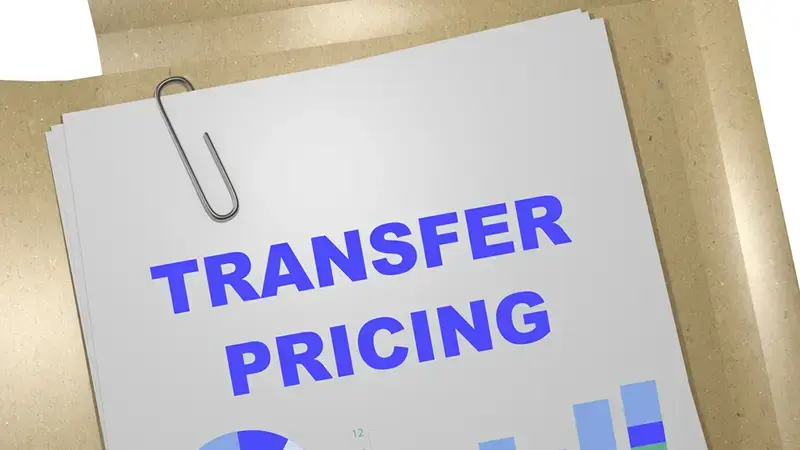Transfer Pricing Documentation: A Comprehensive Guide
In today’s global economy, transfer pricing documentation is essential for multinationals to comply with international tax laws and mitigate legal...
6 min read
 H&CO
Jan 3, 2025 9:04:58 AM
H&CO
Jan 3, 2025 9:04:58 AM

Operational transfer pricing is a cornerstone for ensuring compliance, fairness, and efficiency in intercompany transactions for goods and services within multinational corporations. This article explores the essentials of operational transfer pricing, including setting accurate transfer prices, aligning with regulatory standards, and developing effective intercompany pricing policies. By incorporating best practices, your multinational enterprise can navigate complex tax regulations, enhance financial performance, and mitigate risks. Learn how mastering operational transfer pricing can drive your organization toward global success.
| Key Takeaways |
|
CONTENT INDEX
Operational transfer pricing refers to the day-to-day application and management of transfer pricing policies within a multinational corporation to ensure compliance with tax regulations and alignment with business operations. It involves implementing, monitoring, and adjusting transfer pricing policies in real-time to accurately allocate revenues, costs, and profits between different entities within the organization, particularly across various tax jurisdictions, and ensuring that related party transactions adhere to the arm’s length principle. Operational transfer pricing deals with the practical execution of the transfer pricing policies. This includes tasks such as:
Data Management: Collecting and standardizing financial data from multiple systems and countries.
Price Calculation: Determining the appropriate transfer prices for goods, services, or intangible assets exchanged between entities.
Compliance Monitoring: Ensuring adherence to local and international tax laws to avoid penalties or disputes.
Adjustments: Making proactive changes, or “true-ups,” to align reported results with the policy and regulatory requirements.
Audit Defense: Preparing documentation to support transfer pricing practices during tax audits.
Operational transfer pricing ensures transparency, reduces tax risks, and enhances efficiency by integrating transfer pricing policies seamlessly into business operations.

Operational transfer pricing focuses on three essential components:
setting accurate transfer prices,
ensuring regulatory compliance, and
maintaining good documentation.
Each element is critical for managing intercompany transactions in a way that is fair, compliant with tax laws, and supported by robust records to meet regulatory standards.
Setting transfer prices involves aligning internal pricing with market conditions using established transfer pricing methods like the comparable uncontrolled price, resale price, or cost-plus methods. The goal is to reflect fair market value and comply with the arm’s length principle. Regularly reviewing transfer prices ensures they adapt to market changes and business strategies. Effective data management and strategic method selection are vital for maintaining compliance and operational efficiency.
Adhering to global tax laws is central to operational transfer pricing, as tax authorities worldwide impose strict regulations to prevent profit shifting and ensure fairness. Establishing clear policies and streamlined processes minimizes risks and enhances compliance. Companies optimized their transfer pricing strategy to align with local regulations across multiple countries, reducing audit risks and improving tax efficiency. This proactive approach highlights the importance of compliance in avoiding penalties and maximizing tax benefits.
Detailed documentation is crucial for demonstrating compliance and supporting intercompany transactions. Tax authorities closely examine transfer pricing reports, and inaccuracies can lead to penalties or financial statement adjustments. Comprehensive records, particularly for intangible asset pricing, provide a clear audit trail and reduce the risk of disputes. By documenting calculations and methodologies, companies can ensure transparency and readiness for regulatory scrutiny.
Effective implementation of operational transfer pricing requires strategic planning and practical execution. Best practices include leveraging technology, regular monitoring and adjustments, and proactive engagement with tax authorities.
Multinational corporations often face challenges due to scattered data across multiple IT systems, making accurate transfer pricing calculations complex. Standardizing data collection and implementing automated processes can streamline compliance and reduce errors. Advanced transfer pricing software, like Longview, manages large data volumes and automates methodologies, minimizing manual intervention and improving accuracy.
Continuous monitoring of financial performance is crucial to maintaining compliance with transfer pricing rules and policies, especially under increased regulatory scrutiny. This process involves regularly reviewing and adjusting transfer pricing policies through a lifecycle that includes policy setting, implementation, monitoring, and audit defense. Proactive adjustments, or “true-ups,” help address discrepancies before year-end, reducing compliance risks.
Proactive engagement with tax authorities fosters transparency, builds trust, and mitigates potential disputes in transfer pricing. Companies can collaborate with tax authorities through frameworks like the Mutual Agreement Procedure (MAP) to resolve disputes efficiently and provide updates on transfer pricing strategies. By maintaining open communication, businesses can enhance compliance and fair treatment across diverse tax
Operational transfer pricing plays a critical role in shaping financial statements, affecting both the financial performance of individual divisions and the consolidated results of the parent company. When implemented correctly, it ensures compliance with accounting standards and tax regulations, accurately reflecting the company's economic activities.
Effective operational transfer pricing can also result in substantial tax savings by strategically allocating profits across jurisdictions, enhancing financial health. However, errors in transfer pricing may lead to financial restatements and regulatory penalties, negatively impacting the organization. Ultimately, operational transfer pricing influences profitability, cash flow, and overall financial stability across the business.
Multinational companies face several challenges in aligning their business model with transfer pricing policies to ensure compliance and accurate reporting. These challenges include managing cross-border transactions, handling intangible assets, and resolving disputes to avoid double taxation. Balancing compliance, tax strategy, and operational efficiency is critical for setting effective transfer pricing policies.
Let’s explore these challenges and their solutions in detail.
Cross-border transactions, including services exchanged internationally, are inherently complex due to differing tax rates and regulations across countries. When a division charges below market price, it leads to lower revenues for the selling division, while the buying division sees increased profits. Understanding these impacts is crucial for formulating effective operational transfer pricing strategies to manage cross-border transactions and develop a robust tax strategy.
Navigating these complexities requires aligning transfer pricing policies with international tax laws and treaties. This ensures that intercompany transactions involving related parties are conducted at arm’s length, reflecting market conditions and preventing profit shifting. Proper management of cross-border transactions enhances compliance and optimizes tax outcomes.
Pricing intangible assets and intellectual property presents unique challenges. For instance, Coca-Cola is defending $3.3 billion related to its transfer pricing of a royalty agreement involving intangible assets. Medtronic faced scrutiny for transferring intellectual property to low-tax havens, highlighting the difficulties in pricing IP. These cases highlight the complexity of valuing intangible assets.
Legal challenges often arise in pricing intangible assets, as seen in Medtronic's $1.4 billion dispute with the IRS. Courts may find that tax authorities abuse their discretion in modifying proposed methods, as in Medtronic’s case. To mitigate these risks, companies should maintain thorough documentation and adhere strictly to international tax laws and income tax treaties.
Disputes in transfer pricing can be complex and time-consuming, making it essential to set an accurate transfer price to avoid potential conflicts. Proactive communication with tax authorities, including frameworks like the Mutual Agreement Procedure (MAP), aids in efficient dispute resolution. Frequent updates to tax authorities regarding transfer pricing strategies can preempt audits and penalties, fostering an environment of transparency and cooperation.
If disputes arise, companies have options for appeals or litigation, as well as mutual agreement procedures under tax treaties. Implementing strict risk management controls is essential to navigate these disputes effectively.
PharmaCo: PharmaCo prioritized fair and compliant pricing for its international intercompany transactions. By aligning transfer prices with market value, the company ensured adherence to global tax laws and avoided profit shifting.
PharmaCo also maintained detailed records of all intercompany transactions to meet financial reporting requirements and satisfy tax authorities in multiple jurisdictions. This robust documentation provided a clear audit trail, ensuring smoother tax audits and enhanced compliance.
These case studies highlight how strategic planning, technology, and meticulous documentation can optimize operational transfer pricing while ensuring compliance.
Our global team of transfer pricing experts ensures that your documentation is comprehensive, accurate, and audit-ready, helping you mitigate risks and maintain compliance with international tax authorities
To learn more about our accounting firm services take a look at our individual tax services, business tax services, international tax services, expatriate tax services, SAP Business One, entity management, human capital, and audit and assurance services.
The arm's length principle is a fundamental concept in transfer pricing that requires the terms and conditions of transactions between related entities within a multinational corporation (MNC) to be consistent with those that would be established between unrelated, independent parties in similar circumstances. The arm's length principle ensures that the pricing of goods, services, or intangible assets exchanged between related parties reflects market-based values, preventing artificial profit shifting and ensuring fair tax distribution across jurisdictions. The arm's length principle is widely recognized and enforced by tax authorities globally.
Regulatory compliance in transfer pricing is crucial as it prevents profit shifting and ensures alignment with global tax regulations, thereby avoiding profit manipulation and potential legal consequences. This adherence safeguards both the company's integrity and its operational sustainability.
Technology significantly improves the accuracy and efficiency of transfer pricing by managing large data volumes and standardizing data collection processes, thus minimizing discrepancies and aiding compliance. This ultimately leads to a more streamlined operational transfer pricing system.
Companies handle disputes in transfer pricing primarily through frameworks such as the Mutual Agreement Procedure (MAP), proactive communication with tax authorities, and implementing risk management controls. These strategies ensure effective navigation of potential conflicts.

In today’s global economy, transfer pricing documentation is essential for multinationals to comply with international tax laws and mitigate legal...

Expanding globally offers immense opportunities but also introduces significant transfer pricing risks for multinational corporations that can...

For global companies, matching intercompany transactions and pricing to the value created within their operations is key to both compliance and cost...